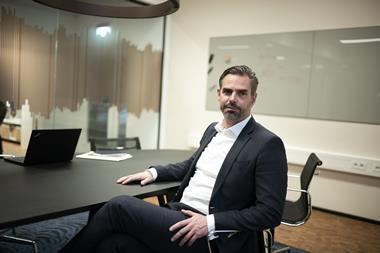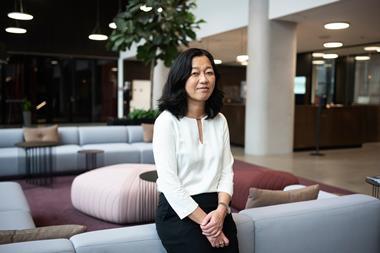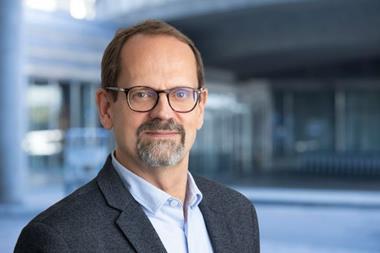SWEDEN - AP3 is planning to drop its the traditional active management model this this year, following a transitional period for investments in 2009 which boosted the pension assets fund to SEK206.5bn (€20.97bn).
Kerstin Hessius, chief executive of AP3, revealed in the fund’s 2009 results that AP3 will move away from a management model focused on traditional asset classes towards one based on risk categories.
At the same time, however, AP3’s investment in absolute return strategies will “continue to develop and is a diversifying risk class in AP3’s portfolio as of 2010”, the report said.
This follows a period in which AP3 recognised it needed to improve its risk management. (See earlier IPE story: AP3 forced to admit shortcomings in risk management)
The fund’s alternative investment portfolio - comprising real estate, private equity and new strategies - now accounts for 16.3% of the scheme’s assets. The remainder of assets are currently held as 49.7% in equities and 34% in fixed income.
Figures showed that although its alternative investments as a whole returned -2.1% against 21.1% from listed assets, the return on new strategies produced the highest individual return of 34.7%.
These investments are aimed at “exploiting temporary opportunities that arise in the market”, and within this portfolio investments in secured bank loans returned 29.5%, while life science equities produced 51.6%. Real estate and private equity both produced negative returns of 0.5% and 18.8% respectively. AP3 pointed out that both of these asset classes felt the impact of the financial crisis later than listed assets, as there is a three-month lag in reported results of underlying companies.
AP3 produced the lowest return of the first four pension funds, acccording to results reports published today, as it generated a net return of 16.3% or 16.4% before expenses to produce a net profit of SEK29.4bn. The fund said the 2009 positive performance had helped recover a “large portion” of the value lost in 2008, when the fund returned -19.8%.
The pension fund revealed the positive performance was aided by a 2.2% active return, or SEK2.9bn. However, these results were offset by a more positive 29.9% return on equities and 8.1% from fixed income investments. In her foreword Kerstin Hessius, chief executive of AP3, said the 2009 results had “recouped a large portion of the value we lost in 2008, both in our total portfolio and in our active management”.
She warned the fund is continuing to enhance its investment strategy, including allocating more resources to analysing total portfolio risk and developing a method for dynamic asset allocation. This is in addition to increasing the alternatives portfolio and strengthening the alpha management through improved risk budgeting.
“These changes are not dramatic but are steps in a never-ending process of improvement. We must stay focused on our long-term mandate even when panic grips the market,” she added.
The first four AP-funds in the Swedish pension system between them produced an average return of 19.4% in 2009, equivalent to a net profit of SEK133.8bn, and bring the total vlaue of assets in AP1-4 to SEK808.8bn.
Of the four funds, AP4 produced the highest net return of 21.5%, compared to a loss after expenses of 21% in 2008, as a profit of SEK 39bn helped boost its assets to a total of SEK195.7bn.
The active return for the fund, exceeding the benchmark index, equalled 1.4% before commission expenses, surpassing the 2009 target by 1%. The active return represents a contribution of close to SEK1.9 billion.
Mats Andersson, CEO said: “2009 was a record year for AP4, as we beat all benchmark indices and achieved a total return of 21.6%. Having completed our thorough change initiative, we are especially gratified to post our best active return since the fund was assigned its new brief in 2001. However, this must be seen in light of a very weak 2008 - the worst year in the fund’s history. AP4’s large exposure to equities obviously contributed to the extreme fluctuations in returns. By sticking to our long-term portfolio strategies, though, we were able to recover much of those earlier losses as stock markets worldwide recovered during the past year.”
Meanwhile AP2, the second-largest fund with assets of SEK204.3bn, produced an overall return of 20.6%, or 20.3% after expenses. This is equivalent to a profit of SEK34.9bn.
It too produced a strong return of 1.2% on active management, however it also highlighted the impact of changes to the strategic portfolio over the year that mainly involved a re-allocation from global government bonds and global equities to credits and convertibles.
Eva Halvarsson, chief executive of AP2, said the 20.6% return is “the highest net result since the fund’s start in 2001”, after the fund’s portfolio enjoyed a “very strong recovery”.
AP1 also produced a 20.2% return in 2009, to bring its assets to SEK202.3bn, with an asset allocation of 58% in equities, 35% in fixed income and 5% in alternatives.
The pension fund attributed the performance to an “increased focus on strategic asset allocation” as well as the rebound in stock markets, after the equity portfolio returned 33.5% and fixed income achieved 7.6%.
Johan Magnusson, managing director of AP1, said: “As a direct result of the good return in 2009 we have now recouped much of the negative value growth we had in 2008. The fund’s return over the past five year exceeds the income index, which means that we are again contributing to the stability of the pension system.”
If you have any comments you would like to add to this or any other story, contact Nyree Stewart on + 44 (0)20 7261 4618 or email nyree.stewart@ipe.com




























No comments yet